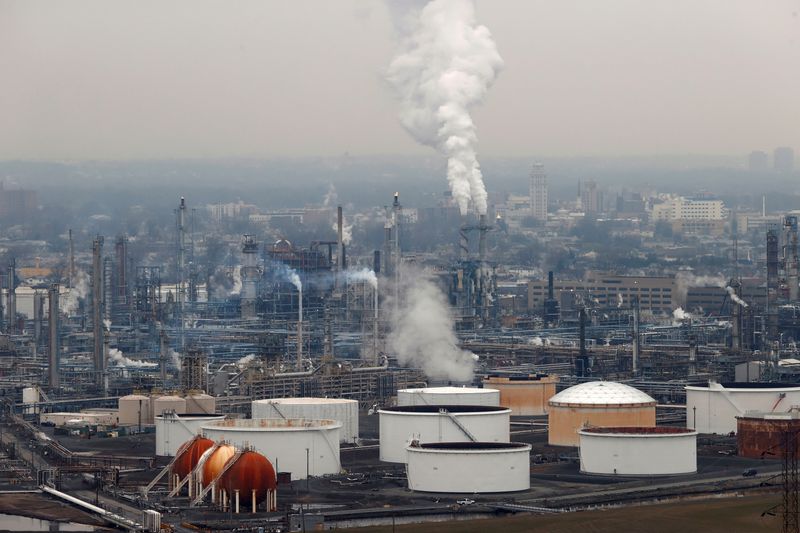By Scott DiSavino
NEW YORK (Reuters) -Oil futures fell over 3% to a one-week low on Thursday on a tentative agreement that would avert a U.S. rail strike, expectations for weaker global demand and continued U.S. dollar strength ahead of a potentially large interest rate increase.
Brent futures fell $3.26, or 3.5%, to settle at $90.84 a barrel, while U.S. West Texas Intermediate (WTI) crude ended $3.38, or 3.8%, lower at $85.10, the lowest closes for both benchmarks since Sept. 8.
Major U.S. railroads and unions secured a tentative deal after 20 hours of intense talks brokered by President Joe Biden's administration to avert a rail shutdown that could have hit food and fuel supplies across the country and beyond.
The prospect of a strike lent the market some support on Wednesday.
That rail deal also helped pressure U.S. diesel and gasoline futures to drop more than 5% during the session.
"The oil complex is drafting back down on U.S. dollar strength and the tentative agreement that would avert a U.S. rail workers strike," analysts at energy consulting firm Ritterbusch and Associates said, noting crack spreads were weak.
The U.S. 3:2:1 crack spread - a measure of refining profit margins - was on track for its lowest close since early March.
Downside risks continue to dominate the global economic outlook and some countries are expected to slip into recession in 2023, but it is too early to say if there will be a widespread global recession, according to the International Monetary Fund (IMF).
World Bank Chief Economist Indermit Gill said he was concerned about "generalized stagflation," a period of low growth and high inflation, in the global economy, noting the bank had pared back forecasts for three-fourths of all countries.
Wall Street indexes were in the red while the dollar held near the 20-year high it hit on Sept. 6 as a slew of economic data pointed to resilience in the U.S. economy which could keep the Federal Reserve on track for aggressive interest rate hikes. [nL4N30M33J] [USD/] [MKTS/GLOB]
A strong dollar reduces demand for oil by making the fuel more expensive for buyers using other currencies.
"Oil fundamentals are still mostly bearish as China’s demand outlook remains a big question mark and as the inflation fighting Fed seems poised to weaken the U.S. economy," said Edward Moya, senior market analyst at data and analytics firm OANDA.
The International Energy Agency (IEA) said this week that oil demand growth would grind to a halt in the fourth quarter. [IEA/M]
Crude prices have dropped substantially after a surge close to its all-time highs in March after Russia's invasion of Ukraine added to supply concerns, pressured by the prospects of recession and weaker demand.

Other factors weighing on oil prices included an increase in U.S. crude inventories and an expected reduction in energy use by the Ethereum blockchain. [EIA/S]
The European Union's executive, meanwhile, plans to raise more than 140 billion euros ($140 billion) to shield consumers from soaring energy prices by skimming off revenue from low-cost electricity generators and making fossil fuel firms share windfall profit.